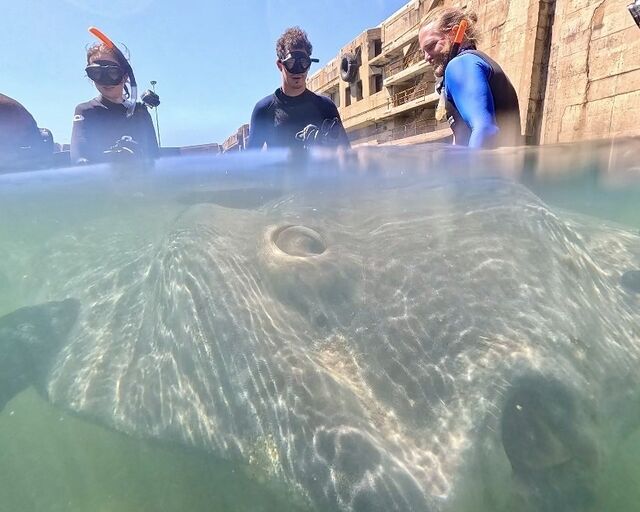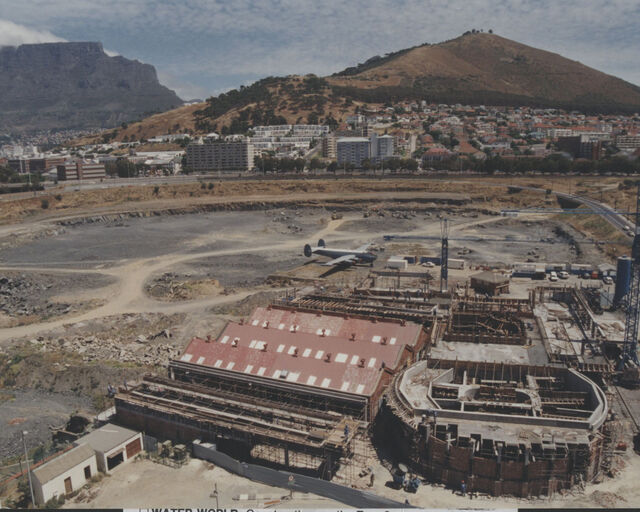We have some new additions to the Two Oceans Aquarium family: West Coast rock lobsters!
West Coast rock lobsters are locally known as “kreef” or crayfish. These tough-looking lobsters are endemic to the western coast of South Africa, from Algoa Bay in the Eastern Cape around the Cape of Good Hope in the Western Cape to Cape Cross in Namibia.
With slow growth rates and a lifespan of about 50 years, West Coast rock lobsters have a fascinating lifecycle. Female rock lobsters carry their orange eggs on tiny hairs beneath their tails (this is when they are “in berry”). After 80 to 90 days, the eggs hatch and produce tiny, transparent, spider-like larvae called naupliosoma. Later, these larvae moult and become phyllosoma larvae with long, hairy legs.
The long-legged phyllosoma drift with the ocean currents for over seven months, where they moult 11 times! It is thought that ocean currents carry some to South America and back. At the final larval stage, the tiny, colourless lobsters swim inshore and find refuge in crevices where they grow to maturity. It is impossible to farm rock lobster because of this long and complex lifecycle.
West Coast rock lobsters are a vital part of the food chain in the kelp forest ecosystem. As carnivores, they enjoy mussels, urchins, starfish, abalone (perlemoen), and even barnacles. Where they occur in masses, West Coast rock lobsters have quite an appetite and could devour entire populations of sea urchins! However, they are also a valuable food source for predators like octopuses, dog sharks, seals, and humans.
Red tide, or decaying phytoplankton blooms, often occur in areas where large numbers of West Coast rock lobster occur. Red tide causes oxygen levels to drop dramatically, and the rock lobsters move inshore, searching for oxygenated water. They are often left stranded by the receding tide, resulting in a mass stranding mistakenly referred to as a “rock lobster walkout”. In 1997, the largest-ever stranding of rock lobster occurred in Elands Bay. An estimated 2 000 tons of rock lobster was lost as a result.
In earlier years, the South African rock lobster fishery would catch about 4 000 tonnes of lobster annually. The fishery has declined dramatically in recent years due to slow growth rates of the lobsters and illegal fishing activities. As a result, their SASSI status is red, indicating that they should not be bought in grocery shops. Today, commercial fisheries harvest less than 2 000 tonnes of rock lobster, contributing about R200 million to the economy every year.
The West Coast rock lobster is proudly South African and a fabulous new addition to the Aquarium family! Come visit them in the Diversity Gallery!
Related News
Sign up to our Newsletter
Receive monthly news, online courses and conservation programmes.




